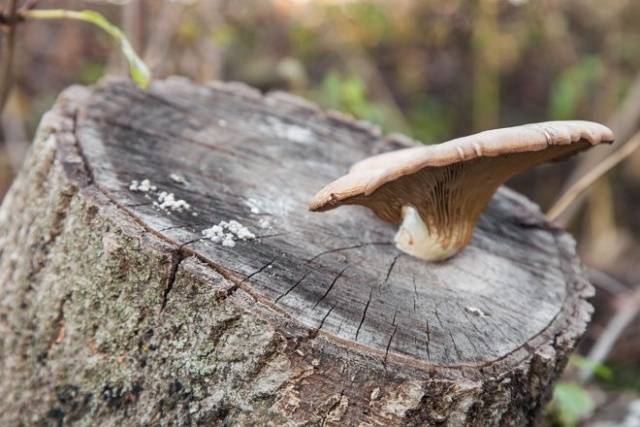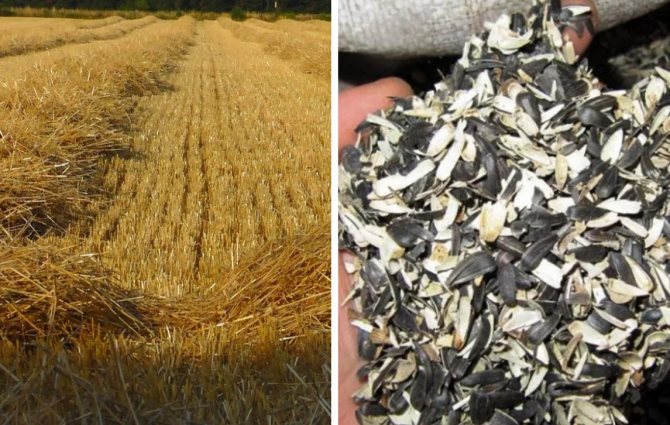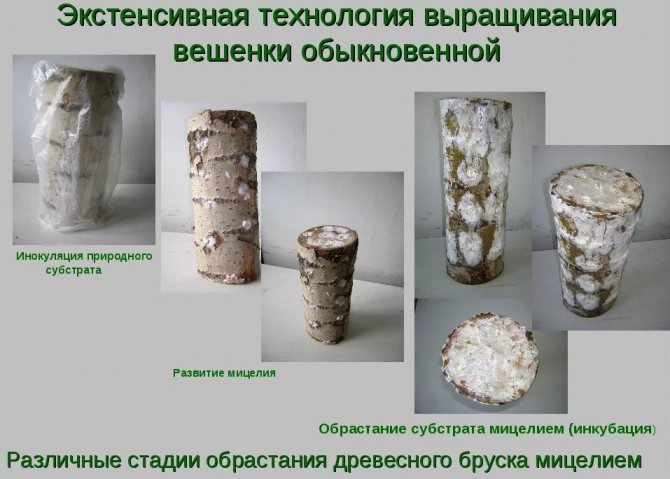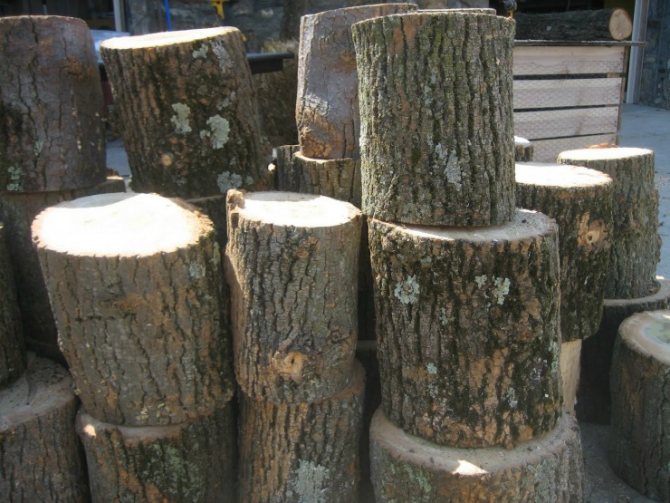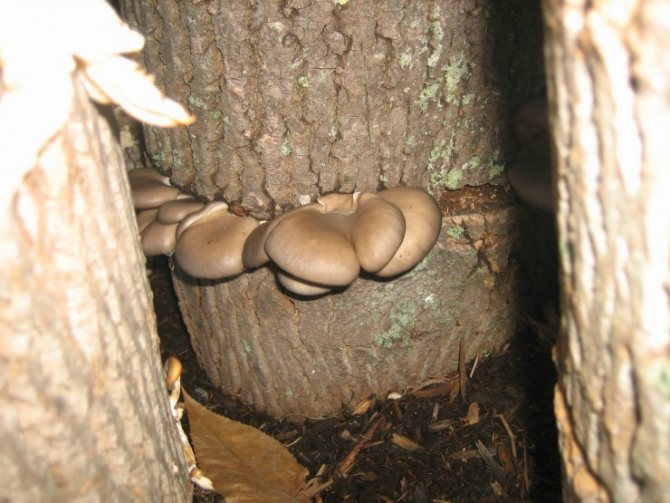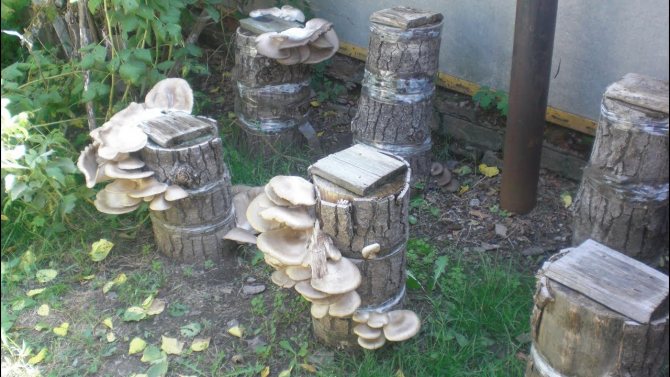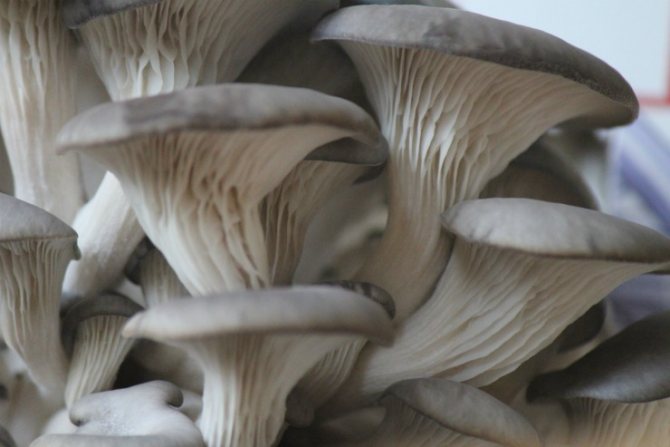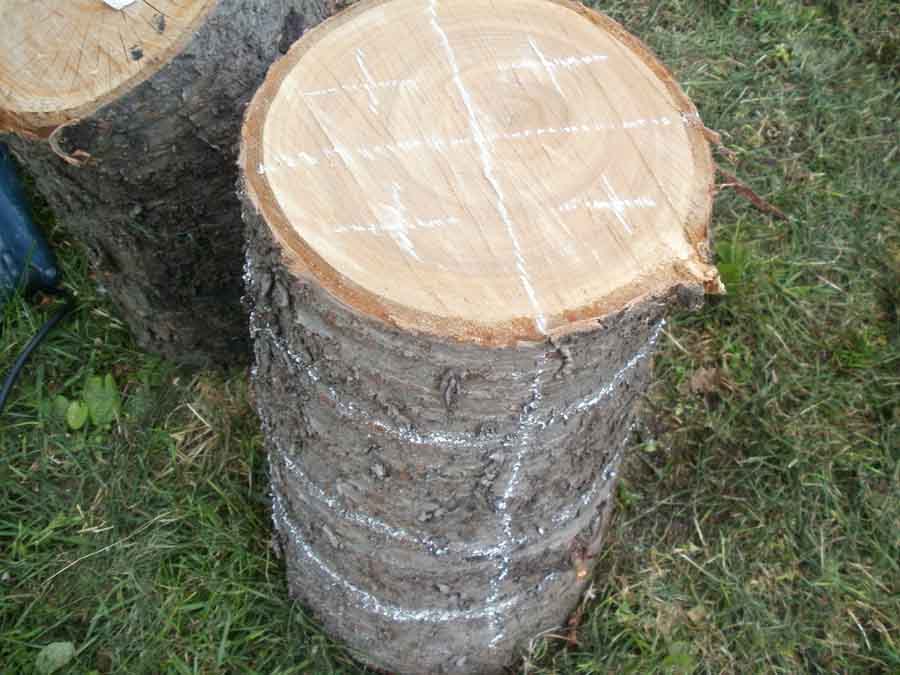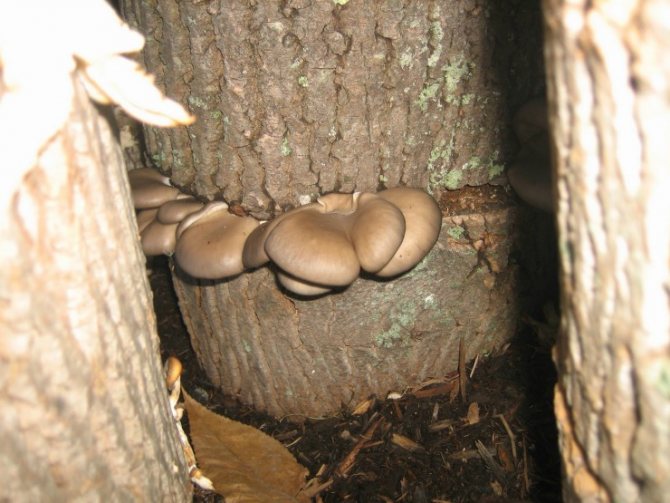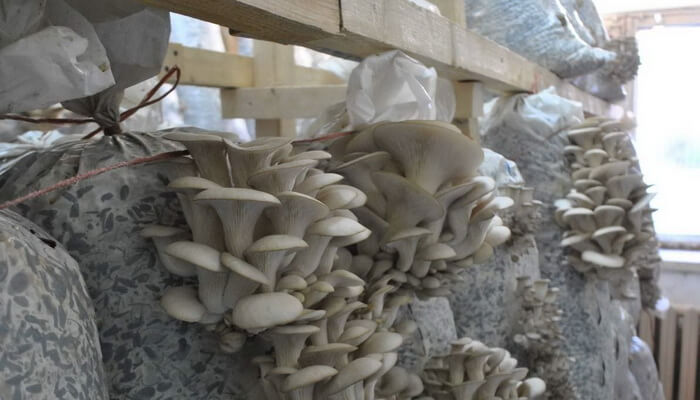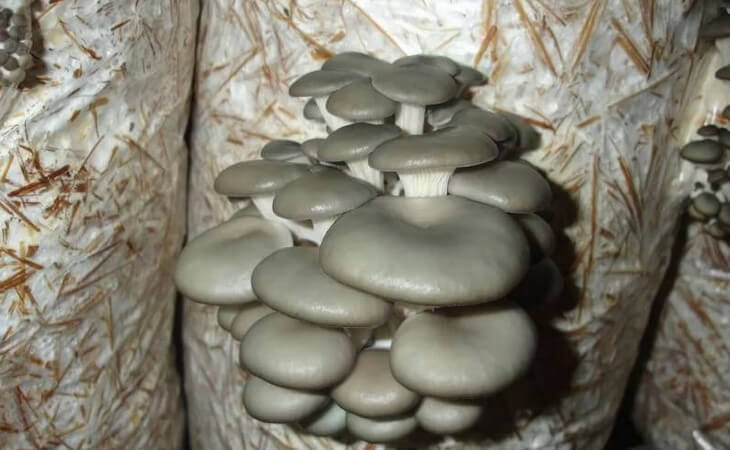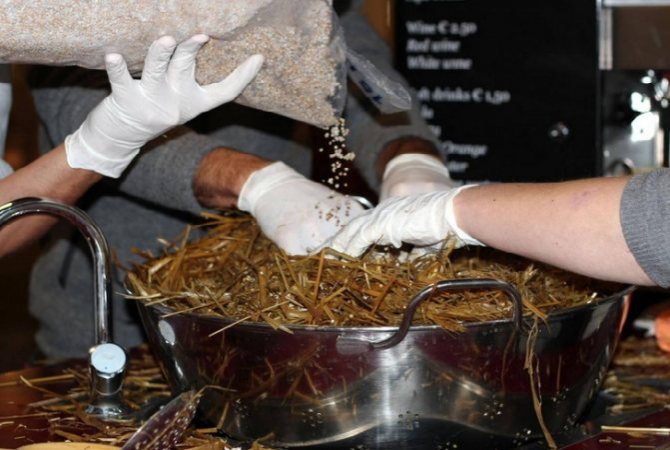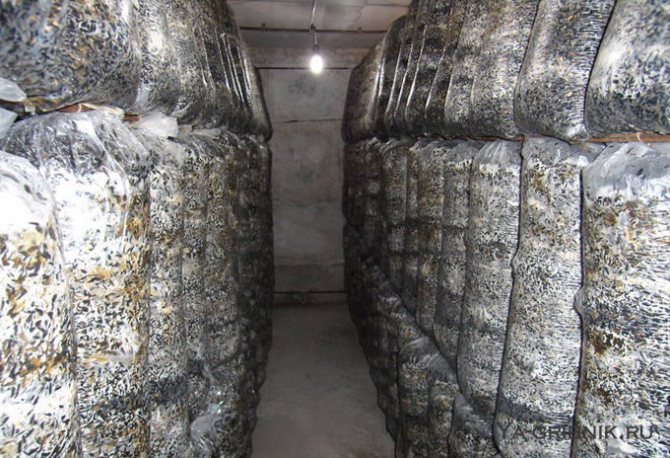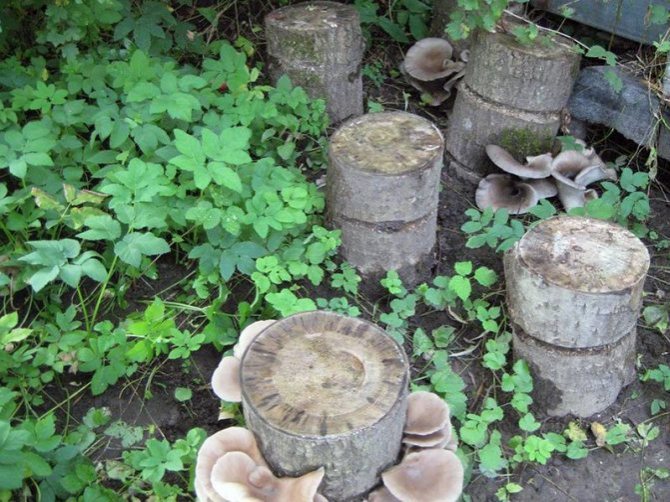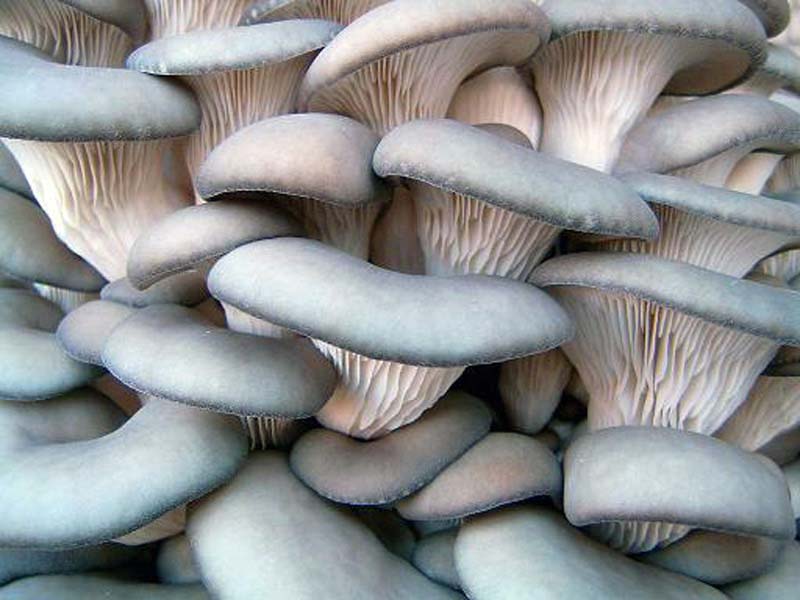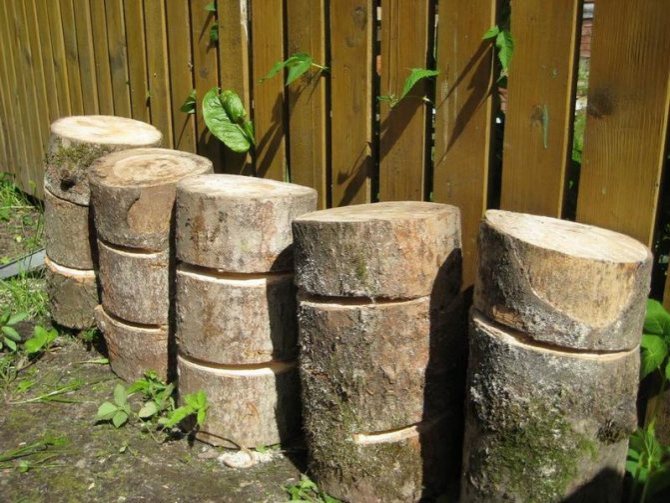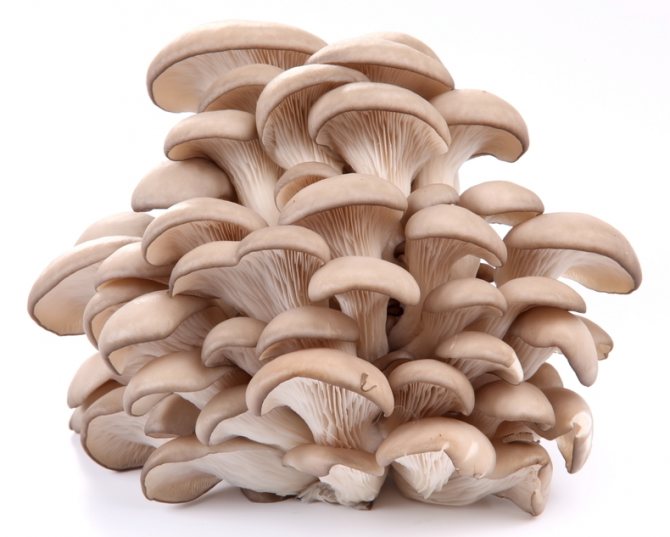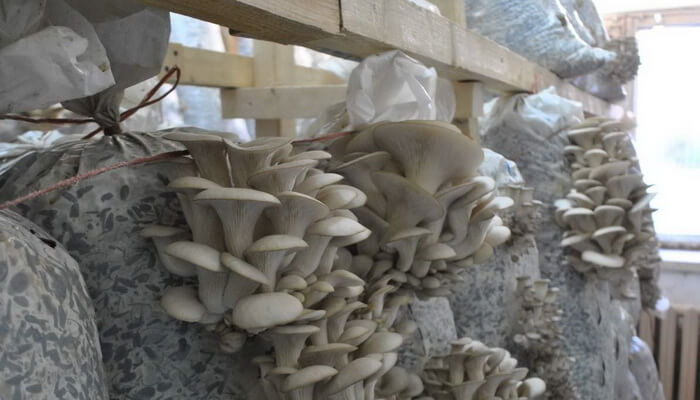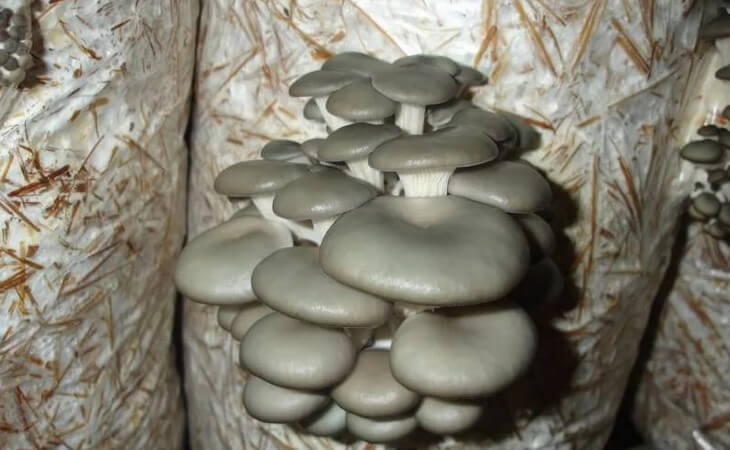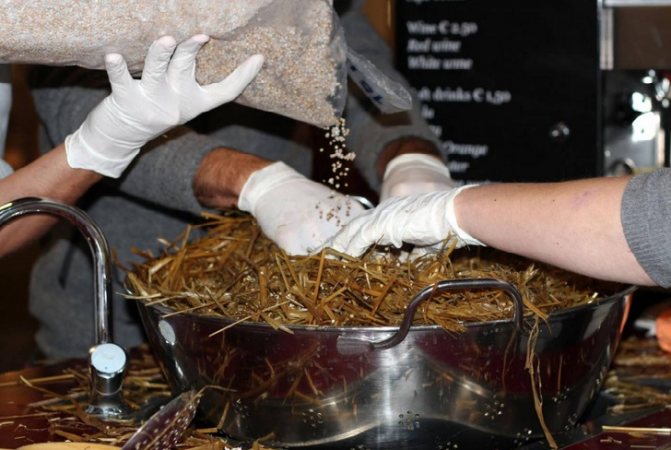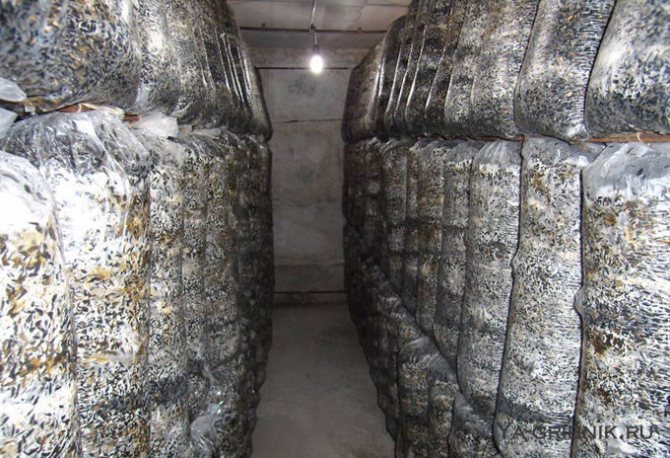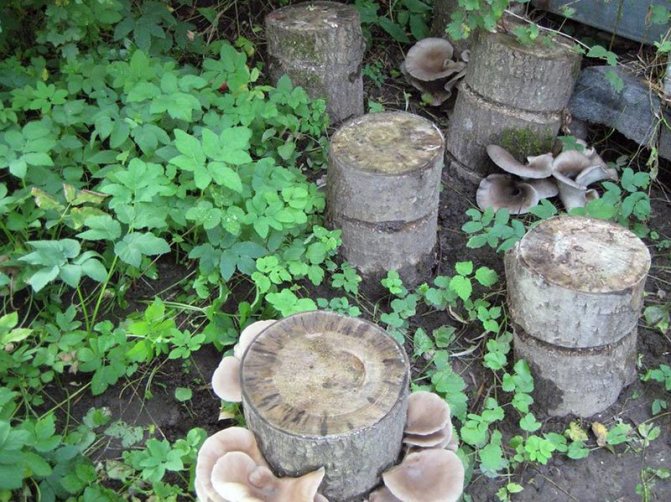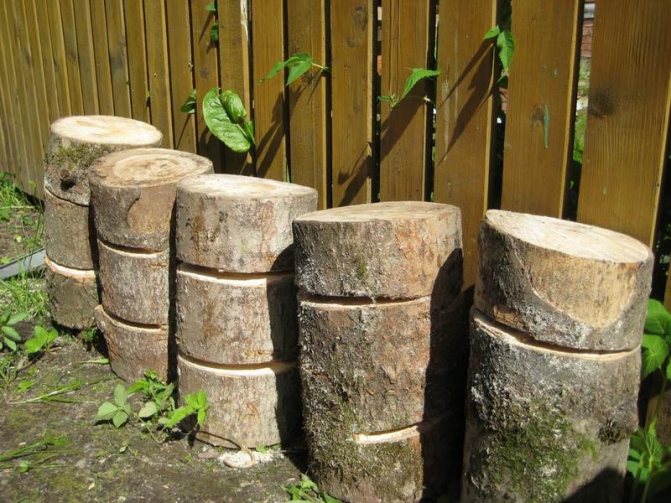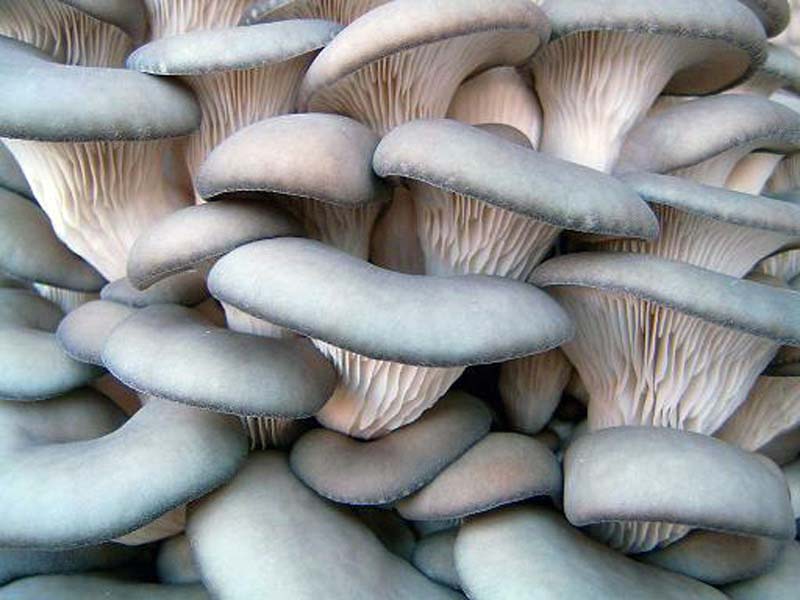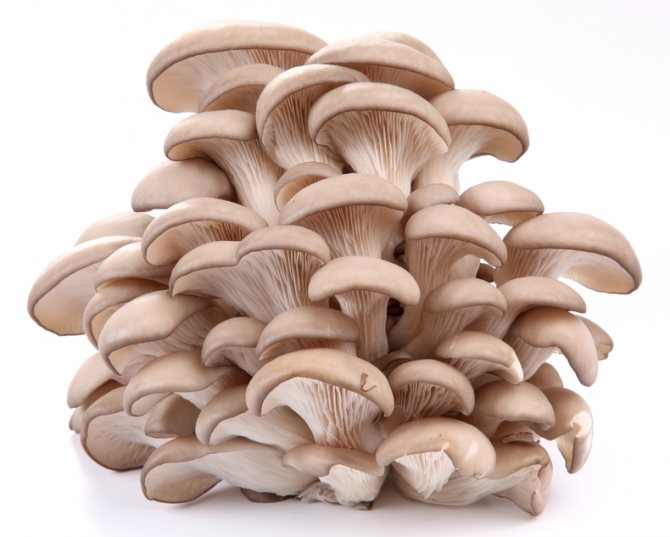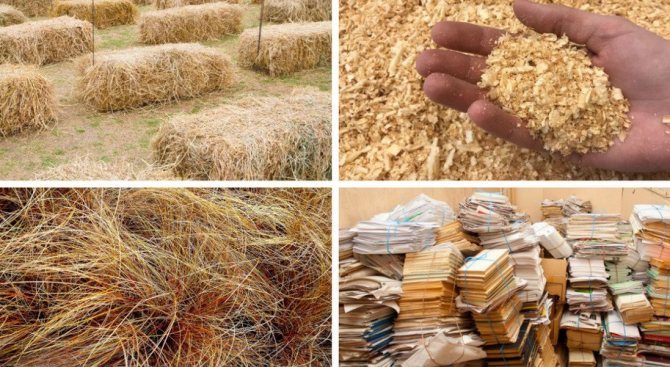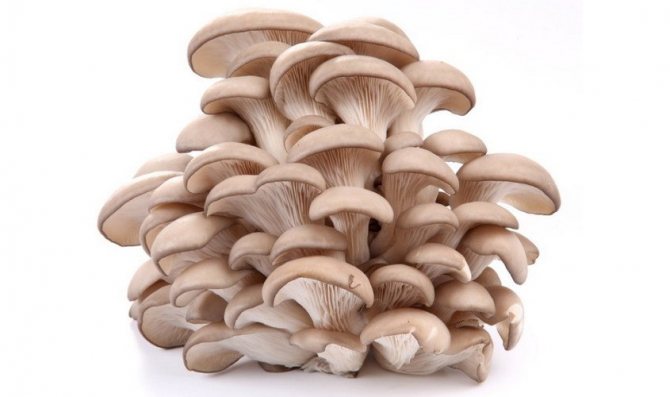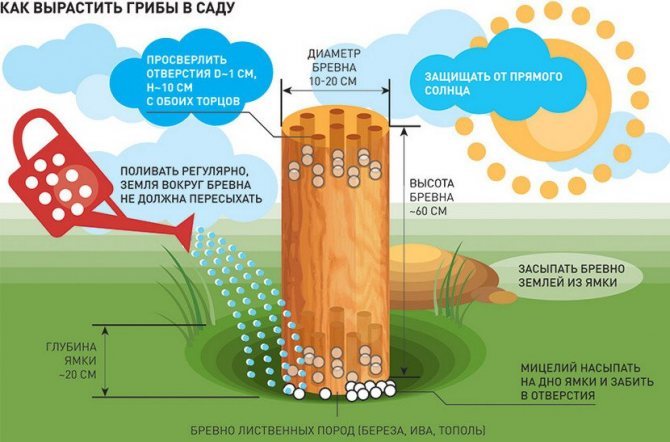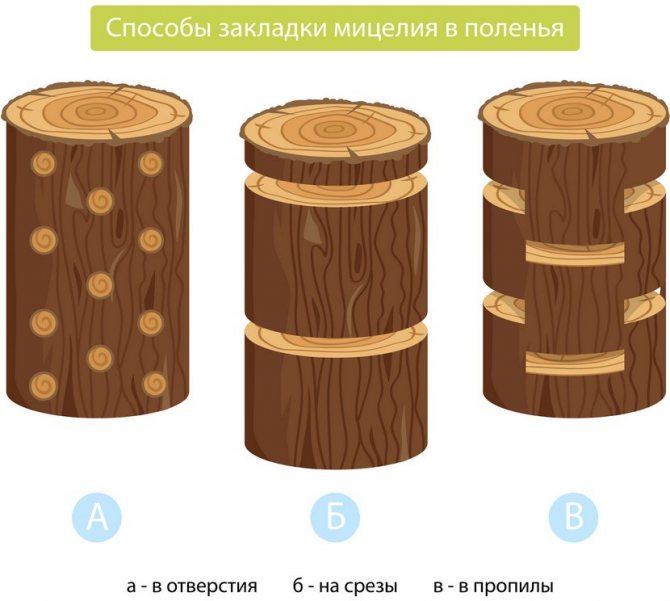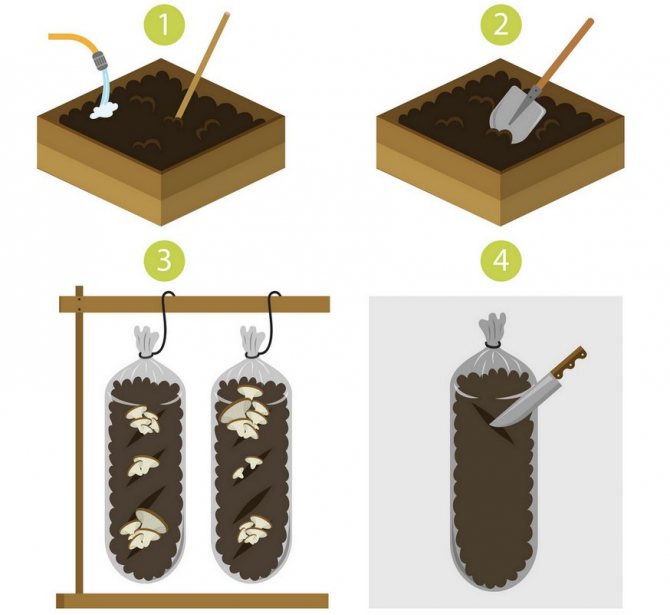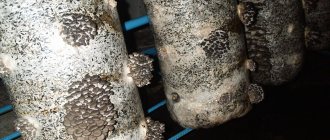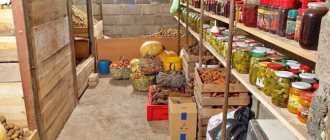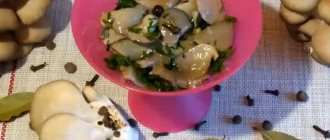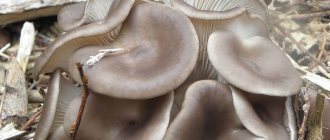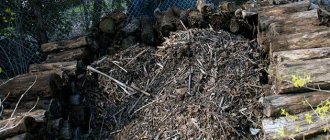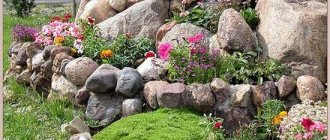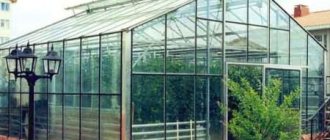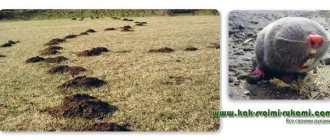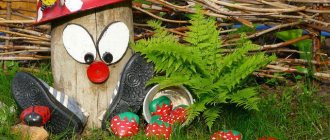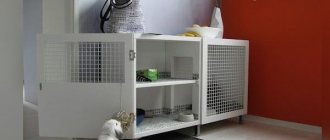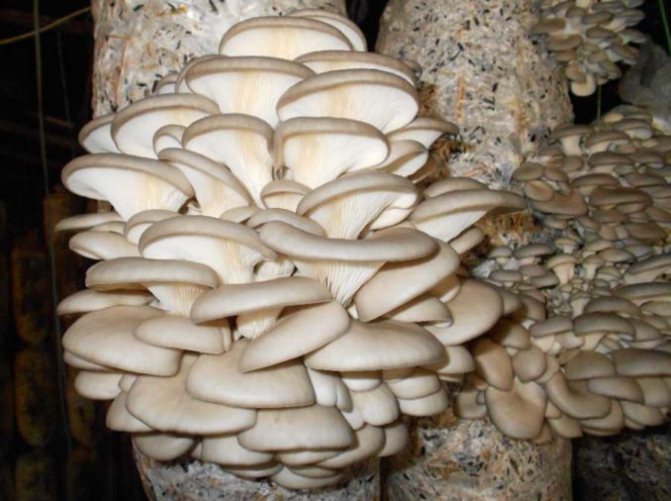
Do you know that in the west oyster mushrooms are called "oyster" mushrooms for their exquisite special taste, and they are considered an expensive delicacy. And in Japanese restaurants dishes made from oyster mushrooms are more expensive than from their "national" shiitake mushroom. And the technology of growing oyster mushrooms in a non-natural growing environment was invented in Nazi Germany, all because Hitler was extremely fond of these mushrooms and wanted to eat them fresh all year round, and not only during their natural autumn growth on stumps and tree trunks. If you adore oyster mushrooms - growing at home is not difficult to create, and anyone can do this, because for this you do not need to have special rooms and understand in detail the science of mushrooms. Success is assured by following our leadership.
How to prepare stumps for mushrooms
Common and royal oyster mushrooms, growing on stumps of which does not take much effort and money, grows well with proper preparation of the habitat. To obtain oyster mushrooms, aspen, birch, chestnut, beech, maple, ash, poplar and other chocks will do.
The main thing is that the trees are deciduous, not coniferous, and do not have time to be amazed by mold. Their height can be up to half a meter, thickness 20-30 cm.
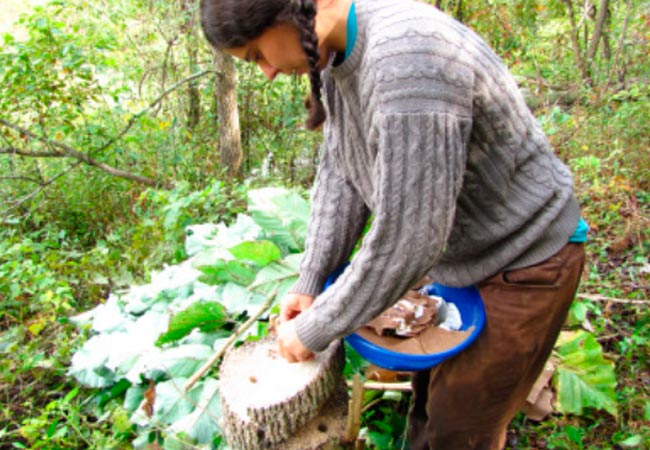

How to prepare stumps for mushrooms
If, after felling, there are not uprooted stumps on the site, we prepare them for sowing in April - May, but if the chocks were brought from the forest freshly cut, we prepare them already in March in order to get the harvest faster.
About the usefulness of oyster mushrooms
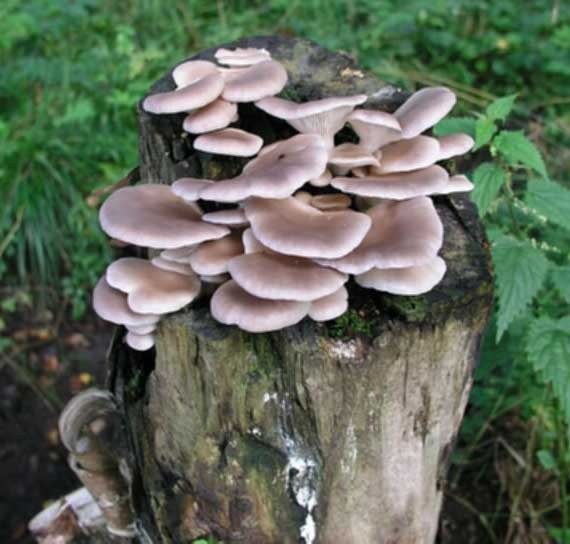

Oyster mushrooms (scientific name Plerotus) stand out for the delicate taste of delicious meat and, in addition to the standard set of vitamins, they contain a very rare vitamin D2, which is responsible for the constant absorption of calcium and phosphorus. This vitamin is attributed to the complex for the treatment and prevention of osteoporosis, children with poor growth. And yet, this vitamin easily dissolves cholesterol plaques, and therefore oyster mushrooms are so appreciated by the Japanese. And by the way, they actually do not suffer from cardiovascular diseases and are not subject to obesity. Plus - the iodine content in mushrooms is close to that in sea fish. Another great plus: 100 grams of oyster mushrooms is only 38 calories, in other words, it is a 100% dietary product.
How to sow oyster mushroom mycelium in tree stumps
Sowing of mushroom planting material is carried out in stationary hemp (those that have already been in the country) in April-May, after the establishment of positive temperatures. Sowing in fresh chocks is carried out in early March.
There are several ways to plant hemp with oyster mushroom:
- Sowing oyster mushrooms for cutting... Cut off a 2 cm thick circle from the hemp, sprinkle the end of the chock with mycelium and cover it with a cut circle, securing it with self-tapping screws.
- Sowing oyster mushrooms into holes... In the lateral surfaces of the chock, holes are drilled with a depth of no more than 6 cm, a maximum diameter of 10 cm. Place the grain mycelium there and cover it with moss or seal it with tape.
- Sowing mycelium on bars... We drill holes as in the previous method and place wooden blocks with pre-applied planting material inside. Cover the holes using moss or sawdust.
- Column method... To get as much royal oyster mushroom as possible by growing on stumps with a lack of space, we use column technology.We saw a long log into several chocks. Pour grain mycelium on the cut of each block and compose them back, forming the original trunk by fastening with nails or self-tapping screws. The maximum column height is 2 meters.
There are many ways of sowing oyster mushrooms, but in each layer of the sown mycelium should be at least 2 cm.When placing the planting material in the holes on a stationary stump, they must be made closer to the soil, stepping back at least 5 cm from the top.
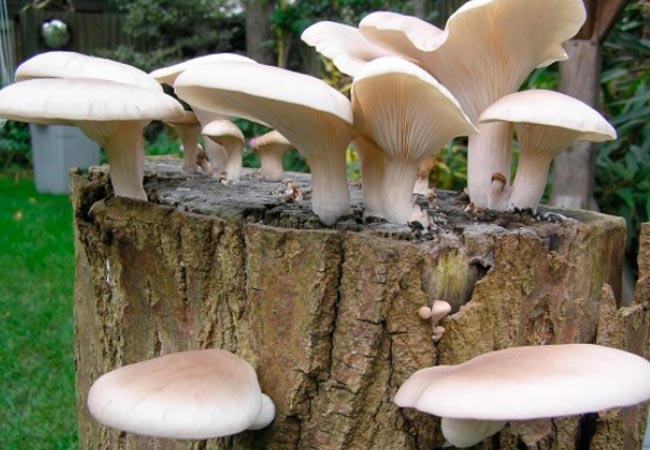

How to sow oyster mushroom mycelium in tree stumps
What should be a quality mycelium
The color of the mycelium should be white or light cream. The only exceptions are oyster mushrooms with bright hats. Their mycelium may be of a different color. The contents of the package must be free of non-overgrown spots. They say that the mycelium is weak. It is clear that such a mycelium will not yield a good harvest.
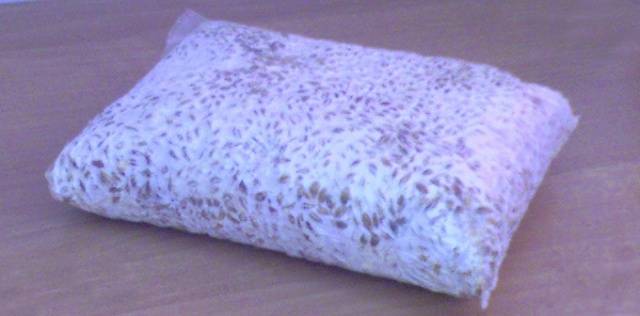

A warning! There should be no green spots on the surface of the mycelium or inside it.
They indicate infection with mold. The harvest of mushrooms from such a mycelium cannot be obtained, and the sown wood material will become unusable.
Often bags with mycelium are equipped with a special gas exchange filter, which not only improves its quality, but also allows you to control the smell of the product. It should be intensely mushroomy and by no means sour.
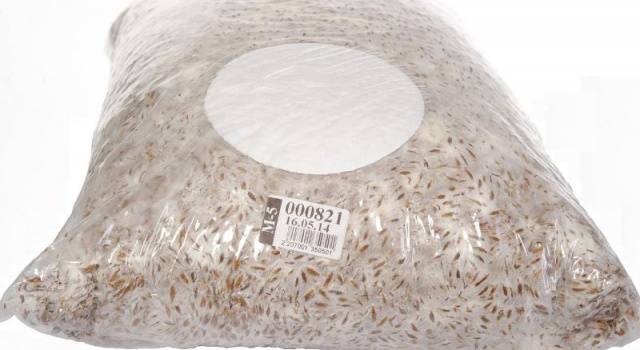

Recently, more and more often they sell special wood sticks, overgrown with mycelium. There are also criteria for checking their quality. The sticks in the bag should be a single whole due to the white filaments of the mycelium, completely entangling them. The color of the mycelium is white, without green or gray inclusions. The smell is intense mushroom.
How to grow oyster mushrooms in the country on stumps? This process is simple. Let's consider it in more detail.
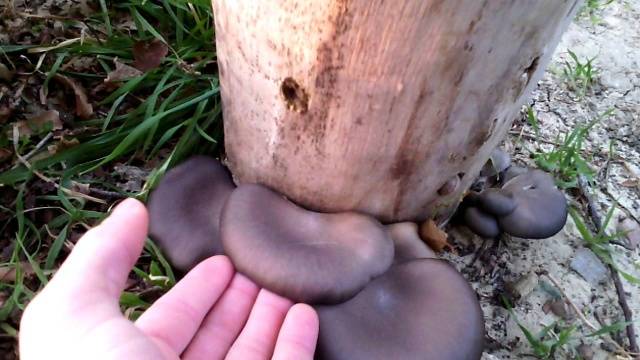

What you need to know before buying
Due to the abundance of offers on the market, it is not easy for novice mushroom growers to deal with the types of mushroom seeds. Let's consider the main criteria that should be considered when buying.
Types of oyster mushroom mycelium
Today, five varieties of mushroom planting material are produced:
- Grain mycelium (live) - grown in sterile laboratory conditions on grains of any cereal. Plus - the highest germination and productivity. Minus - it is stored for no more than a month at a moderate temperature (up to 22º C), since it contains live culture.
- Grain (dried) - the same grain overgrown with live hyphae, but dried using a special technology. Plus - practically unlimited shelf life. Minus - slightly inferior in characteristics to the previous version.
- Dry powdery is a mycelium produced from biologically dried by means of complex technological processing. Pros - small volume of packaging, long-term storage, ease of use. Minus - the yield is lower than that of the first type.
- On sticks (dry) - planting material grown on beech and oak blocks, then biologically dried. Pros - ease of use, high germination, unlimited storage.
- Compost - it is extremely rarely used, it is produced mainly on order.
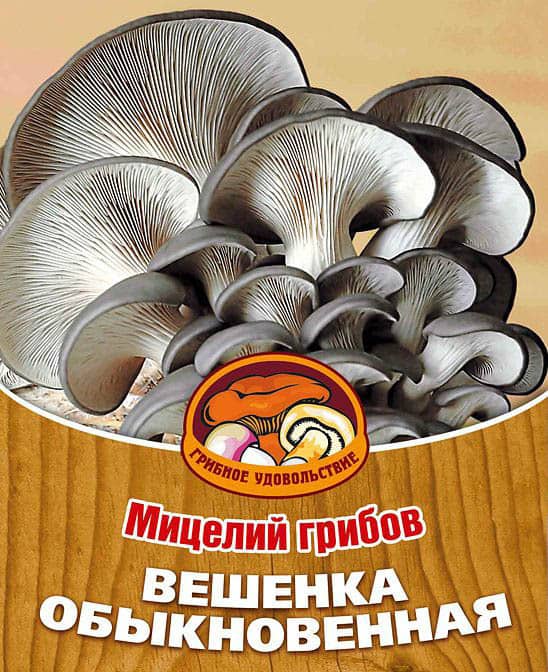

Note: it is convenient to use the oyster mushroom mycelium on cubes if you need to slowly remove a dying tree from the site. In 5-6 years, it will give cellulose to the mushrooms and turn into dust, and you will always have mushroom dishes on your table.
Oyster mushroom strains: what is it?
When choosing a mycelium, novice mushroom growers are faced with two concepts - species and strains. In the first case, the name will be written in a standard way, for example, White Elf oyster mushroom Pleurotus cystidiosus. In the second, instead of the name, the abbreviation P-14, PPH or another is often written, which in this case means a variety of the pulmonarius species.
A strain and a species are not the same; one species can have many strains, that is, hybrid breeding forms that have some differences. All oyster mushroom strains are divided into three groups:
Storing stumps with oyster mushroom crops
When oyster mushrooms are sown in freshly sawn chocks in early spring, it is necessary to ensure their safety until temperatures above zero, otherwise the mushrooms will freeze. Then we take out the stumps into the garden and set them on the ground.
How to save hemp with planting material
- Column storage... We hold the columns of the chocks upright in several rows, leaving narrow gaps between them and filling them with sawdust or damp straw. We cover the rows around the perimeter: a perforated film or burlap is suitable for shelter. Add another layer of straw or sawdust on top.
- Storing individual chocks... We wrap the hemp in perforated polyethylene or burlap
We store stumps and columns in a basement or other room at a temperature of 15 degrees Celsius and good ventilation, avoiding drafts. We regularly moisten the air by spraying water. Shelf life - until the beginning - mid-May: as soon as they are covered with white bloom, they are ready to be taken out to the garden or garden.
Mushroom care
The oyster mushroom plantation, grown on stumps in the country, practically does not need care, with the exception of maintaining soil moisture near the stumps, which in the initial period of the year is constantly watered until fruiting stops.
At the same time, it should be remembered that oyster mushrooms do not tolerate heat, since the mycelium dies when the air is overheated. These mushrooms do not actually indulge in disease, but they are also afraid of mold.
In the winter season, the stumps remain in their former places and do not require additional shelter, but when growing oyster mushrooms in areas with a cold climate, it will not be superfluous to cover them on top with spruce branches or straw.
Mushroom picking
The harvest of oyster mushrooms, grown on stumps in the country in an extensive way, usually ripens in August - September, therefore it is important to collect them before the biological maturity of the specimens, when spores have not yet appeared.
The readiness of the mushroom is determined by the cap, when it begins to dry out, flattens or turns upward and its diameter reaches 8 cm, and the length of the stalk is 4 cm.Old specimens of products lose their taste, consist of peel and spores, become light and tough.
Oyster mushrooms grow in families, each of which has mushrooms of different sizes, so the bunch is removed completely, since the small specimens left for ripening will no longer grow after damage to the aggregate.
Harvesting these mushrooms from stumps is carried out by cutting them under the very base with a sharp knife to prevent the mycelium from rotting. Products are stored in baskets, boxes and boxes for up to 2 months at a temperature of 2-4 degrees.
In the initial period, one stump brings no more than 600 g of production, but in the next two years the yield increases and can reach 2.5 kg. The cultivated crop is influenced by the weather situation and the peculiarities of climatic conditions. Depending on the type of wood, fruiting of oyster mushrooms on stumps lasts 5-6 years.
How to grow oyster mushrooms in the country on stumps
Planting stumps in the ground
Covering the chocks with a white bloom indicates readiness for planting in the ground. We plant stumps with mushroom fruit bodies in the shady corners of the garden (vegetable garden), building, if necessary, a canopy:
- We dig shallow holes or a trench. If several trenches are being prepared, we make the distance between them more than half a meter.
- We line them with a layer of sawdust or wet leaves.
- We put the chocks in the grooves, placing them every 30 cm, and sprinkle with earth - no more than 15 cm.
Growing oyster mushroom using the column method, we connect the columns with a wire, forming a solid wall that can be installed upright or laid on the ground.
Caring for oyster mushrooms on stumps and picking mushrooms
In the first year of planting, we regularly water the soil until fruiting is complete: this is the care. As for wintering, we leave the stumps as they are: they do not need additional insulation, but in cold climates, mushroom growers cover the chocks with straw.
We collect the first oyster mushrooms when the diameter of the cap is 8 cm, the height of the leg is 4 cm. The first collection is usually carried out in August or early September. If the autumn is long and warm, the mushrooms are harvested until November, except for pink oyster mushroom - it is afraid of cold weather.
On average, up to 0.7 kg of selected oyster mushrooms are collected from one stump in the first year, in the second - up to 2.5 kg.
Most of the mushrooms grow in the second and third years of mycelium life. In subsequent years, the first harvests appear in April-early May and are repeated on September or October days.
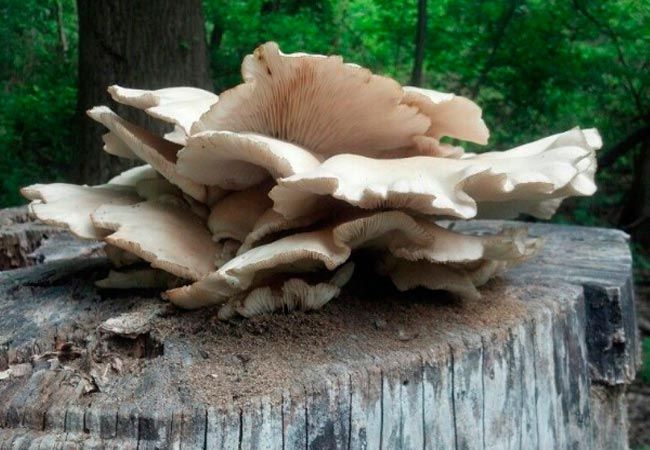

Growing oyster mushrooms on stumps
Description of oyster mushrooms
This lamellar fungus belongs to the pleurotic or oyster mushroom family, which is very numerous - about 100 species. All of these mushrooms, with rare exceptions, grow on dead or dying wood, as they feed on cellulose. Oyster mushrooms can often be found on tree stumps. Mushrooms belong to saprophytes, they do not need symbiosis with tree roots.
Attention! For successful growth, oyster mushroom needs hardwood: willow, aspen, oak, mountain ash.
The cap of oyster mushrooms resembles an ear in shape, in adult mushrooms it can reach up to 30 cm in diameter. The leg is short, sometimes it does not exist at all - the mushroom is attached to the tree directly with the cap. The color of the plates and pulp is white. Mushroom caps are colored differently. In oyster oyster mushrooms, they are dark brown, in late oyster mushrooms, they are lighter and very light - in pulmonary. There are very elegant oyster mushrooms with lemon yellow, hot pink and orange caps. The photo shows an oyster mushroom growing wild in the Far East.
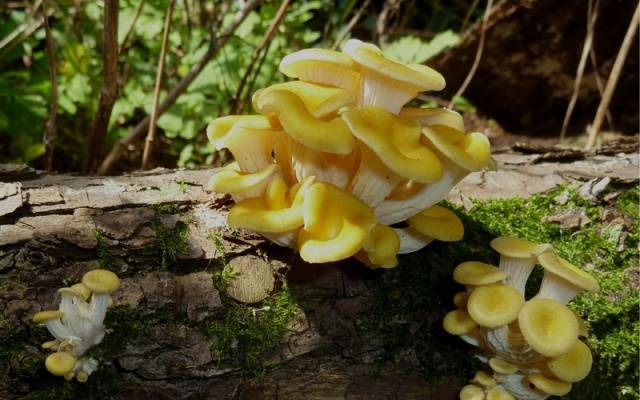

Not all types of these mushrooms are suitable for home or industrial cultivation.
Using oyster mushrooms
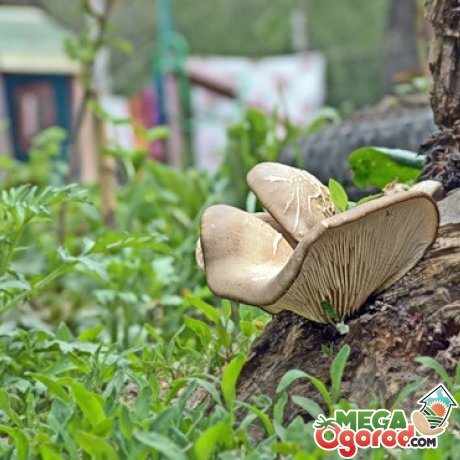

Oyster mushroom has excellent taste and nutritional properties. Many delicious dishes can be prepared from oyster mushrooms. It should be noted that oyster mushrooms do not need to be soaked for a long time, you just need to rinse thoroughly.
Oyster mushrooms are often frozen, dried, pickled, salted, and, of course, used fresh.
From August to September, you can pamper yourself and your family with fried oyster mushrooms or delicious soups. If you combine mushrooms with vegetables, you can get great stews, pies, pancakes and many other delicious dishes. Caviar from oyster mushrooms, carrots and onions is especially popular. You can delight guests in two lights by preparing several oyster mushroom dishes at once.
These mushrooms are rich in vitamins and elements necessary for the normal functioning of the human body. In addition, they will delight women who are watching their weight with their low calorie content.
Growing oyster mushrooms on stumps in greenhouses
Mushroom connoisseurs want to get oyster mushrooms all year round, but in the garden and vegetable garden without shelter and heat, this is impossible. However, you can get mushroom harvests year-round by planting stumps in heated greenhouses, which is how farmers grow them.
In order to have a bountiful harvest of mushrooms in any season, we provide stumps by sowing them in October with planting material according to any of the above methods, the following conditions:
- We deepen the chocks into the greenhouse soil by 15 cm.
- We maintain in the greenhouse 14-15 degrees Celsius and a humidity level of 90%. We adhere to the regime for a month and a half, until a bloom of white appears.
- We lower the temperature to 0-2 degrees Celsius for three days so that fruiting comes sooner.
- Then we maintain a temperature regime of 10-14 degrees Celsius until fruiting ends.
Such temperature cycles can be repeated several times, so the mushrooms yield year-round crops and do not disappear from the table even in severe frosts. The main thing is to ensure a sufficient level of humidity and an appropriate temperature regime.
Now it is clear how to grow a lot of mushrooms on the site and in greenhouse conditions. Growing oyster mushrooms on stumps is an interesting and easy task, pleasing with numerous fruiting for three to six years.
If there are orphaned stumps in the country, which you don't want to deal with, it is enough to plant an oyster mushroom, and it will gradually destroy the wood. The result is a double benefit: there are full bins of mushrooms, and the land, free from unnecessary wood residues, on which it is good to grow any garden and vegetable crops afterwards.
Step-by-step instructions on how to grow oyster mushrooms at home and in the country
There is a dedicated technology on how it is possible to grow these mushrooms at home. It is successfully used by many people, making it possible to feast on mushrooms and not spend a lot of money on their purchase.
Step 1. Mycelium
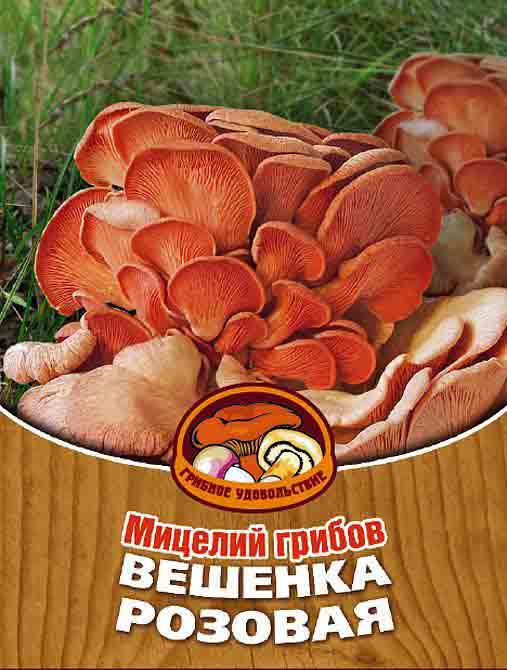

So, in order to grow oyster mushrooms at home or in the country, if it is visited in winter, first of all, you need to purchase planting material - mycelium. This substance can be purchased at any enterprise that is engaged in the industrial cultivation of mushrooms. Mycelium can also be purchased online. Then the material will be delivered to your home.
If you are inexperienced in this matter, you do not need to purchase mycelium in significant quantities. But even so, a kilogram will be quite enough to grow three to four kilograms of mushrooms. The purchased mycelium must be stored at a temperature of 2-3 degrees Celsius. Therefore, it is placed in the refrigerator where vegetables are stored.
Step 2. Preparing the substrate
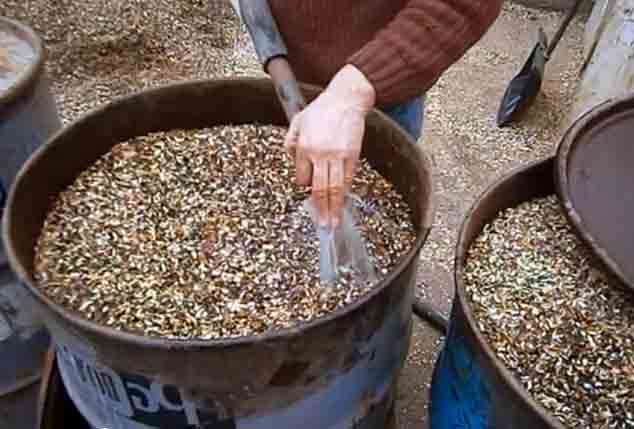

The second step is to prepare the substrate for planting mushrooms. Wheat or barley straw, buckwheat hulls, sunflower hulls and corn cobs are considered the best raw materials for this. Planting mycelium in sawdust or tree shavings will not be very productive. And the cultivation of mushrooms itself will be heavy and laborious.
Raw materials must be taken clean, mold-free. For disembarkation, you need ten kilograms of material crushed into fractions. The prepared substrate undergoes a thermal disinfection procedure. This not only prevents the appearance of harmful insects, but also moisturizes the raw materials. It is immersed in water and boiled for two hours. The soft substrate is boiled for no more than one hour. Then the water must be drained and the material cooled to a temperature of 28 degrees. It should be slightly damp so that water does not drain off when it is squeezed.
Step 3. Mushroom blocks - what are they?
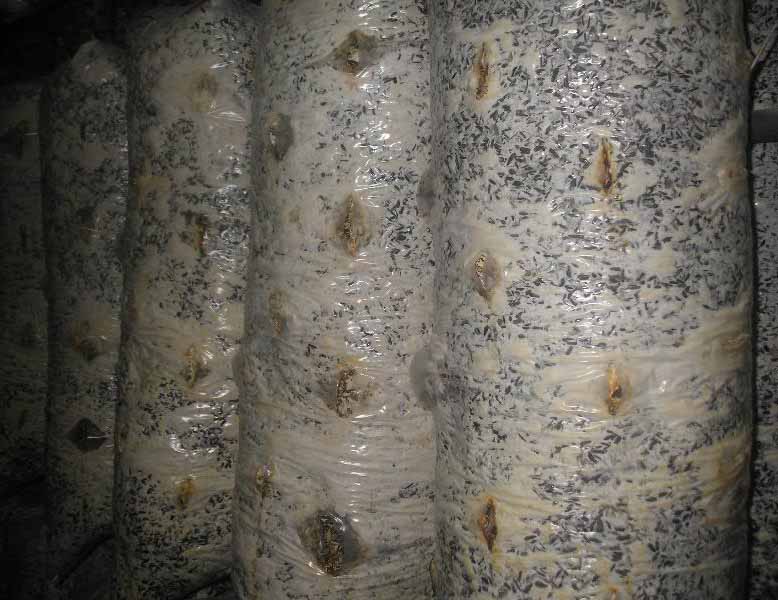

After that, you need to create mushroom blocks. For growing oyster mushrooms, polyethylene bags with a volume of five kilograms are used. Two bags will be enough for this amount of mycelium.
Before laying out the substrate, the bags are sterilized. First, they are washed with warm water, then placed in a solution of bleach of one percent concentration for two hours.
Raw materials for planting and mycelium are placed in the prepared bags, alternating layers. Spread half a centimeter of mycelium on six centimeters of the substrate. The top layer must be from planting raw materials. The tightly tied bag is perforated. In the filled bags, you need to make cuts of two centimeters in size. Holes are made in a checkerboard pattern every fifteen centimeters.
The finished mushroom blocks are placed in a special place where mushrooms can be grown. At this point, the incubation phase begins. Its duration is two weeks.
At this stage, oyster mushrooms need special care. The temperature regime for keeping mushroom blocks should be between 19-23 degrees Celsius. In addition, you need to systematically ventilate the room, preventing insects from entering.
Step 4. Care
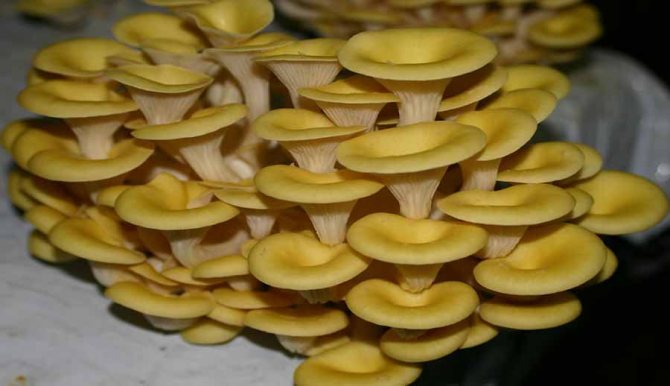

In the early days, the temperature of the planting stock will increase sharply. It is extremely important not to allow it to overheat, because mycelium can die from this. The maximum permissible temperature of raw materials is 30 degrees.To reduce it, you must use a fan. It is placed in front of the mushroom blocks.
At this stage of mycelium development, there is no need for lighting. After five days, you can observe how they grow, wrapping around the planting raw materials with their threads. In ten days, the mycelium will completely fill the block. It will turn into a dense white mass with a characteristic mushroom smell.
Step 5. First fruiting - how to care for it properly?
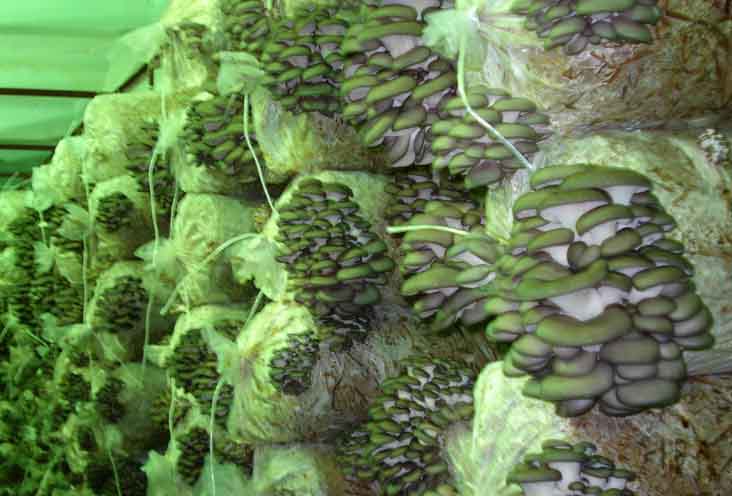

Fruiting time is the most interesting stage in the growing process of these mushrooms. If it has come, it means everything has been done correctly. But at this stage, caring for the myceliums is not over.
After the incubation period has passed, the myceliums need:
- Lowering the temperature regime in the room to 12-15 degrees Celsius.
- With the help of fluorescent lamps, they provide eight hours of illumination.
- Increase the level of humidity up to 90%.
- Frequent airing - at least four times a day.
The humidity can be increased by spraying the walls and floor of the room. Mushrooms cannot be wetted. If all of the above conditions are provided to them, then very soon young rudiments of mushrooms will appear through the cuts. The fruiting period of these mushrooms is no more than two weeks. Oyster mushroom caps have been increasing significantly in recent days. This is the right time to harvest. It is not advisable to cut the mushrooms. They must be unscrewed from the substrate.
Step 5. Second and subsequent fruiting - how to prepare properly?
After the first harvest has been collected, the room needs to be well ventilated and wait for their re-ripening. It will be in about fifteen days. At the same time, the mushroom blocks must be kept under the same conditions. From one such planting, you can collect up to four crops of oyster mushroom. The first two harvests will be the most productive. They make up seventy-five percent of the total mushrooms.
After the last, fourth crop has been harvested, the myceliums must be replaced. They are used as top dressing in garden plots.
Growing oyster mushrooms in an intense way, as it turns out, is not at all difficult. Although for many, this process will seem laborious and overwhelming. In this case, you can resort to another option. Purchase of ready-made myceliums in blocks at enterprises that are engaged in mushroom growing. In addition to this, you will receive detailed instructions on how to grow oyster mushrooms at home and in the backyard. You just need to place the bags in a special place and create the necessary conditions for them.
What oyster mushrooms can be bred at their summer cottage
Originally grown in nature, common oyster mushroom or oyster. Thanks to the efforts of scientists, special hybrids of these mushrooms have been bred, which are distinguished by higher yields. They are better suited for growing in artificial conditions.
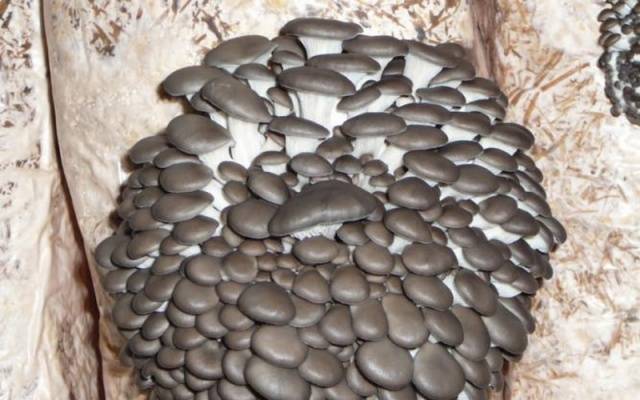

These mushrooms grow well both on artificial substrates and on stumps.
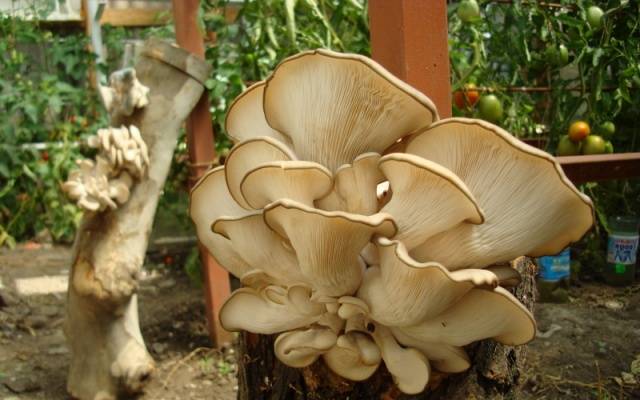

If you are going to grow mushrooms in small quantities, it is better to buy ready-made mycelium. When setting up a large plantation, it is more economical to grow it yourself. Unfortunately, manufacturers do not always sell quality mushroom mycelium. Therefore, there is a risk of wasting money and labor and ultimately being left without a crop.
A warning! When buying, carefully inspect the mycelium, checking its good quality.
Site preparation for growing
You need to carefully consider the choice of a place for growing oyster mushrooms: it can be both a summer cottage and a garden plot. Mushrooms can grow in the substrate in the greenhouse, on wood in the garden, and even in the vegetable garden.
On the wood in the garden
Oyster mushrooms are preferably planted in freshly cut wood, although mushrooms will grow just as well in older log cabins. Mushroom material grows in partial shade, but can withstand direct sun. The ideal growing place is a perennial garden.
In autumn, 2-3 rounds of deciduous trees are selected (aspen, birch, poplar or willow are suitable).Their length can be from 50 cm to 1 m.The diameter is from 17 to 27 cm.
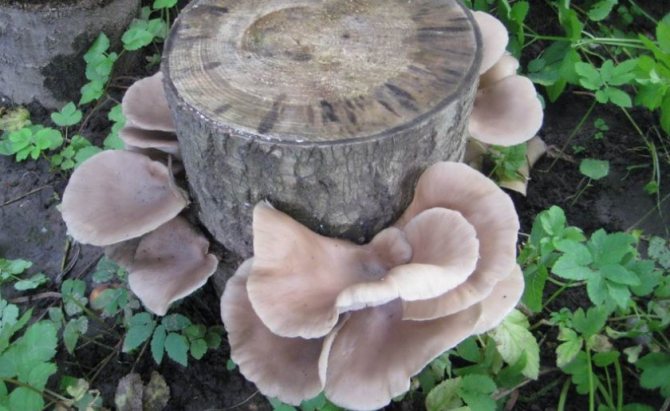

So that the wood does not dry out, it must be placed in a shaded place on a hill. Make transverse cuts with a depth of 7–10 cm from the side and from the butt end (it is possible in a circle). The distance between the perforations along the length and along the radius should be about 10 cm.
In the substrate in the greenhouse
Oyster mushrooms are very convenient to grow in a greenhouse, especially when it is free from other plants. It is worth noting that the humus left after growing mushrooms can be further used as fertilizer. Breeding oyster mushrooms in a greenhouse opens up great opportunities:
- Commercial cultivation.
- Easy to care for.
- Getting an environmentally friendly product.
- A convenient way to grow.
- High productivity.
- Short performance time.
- The ability to grow both in winter and all year round.
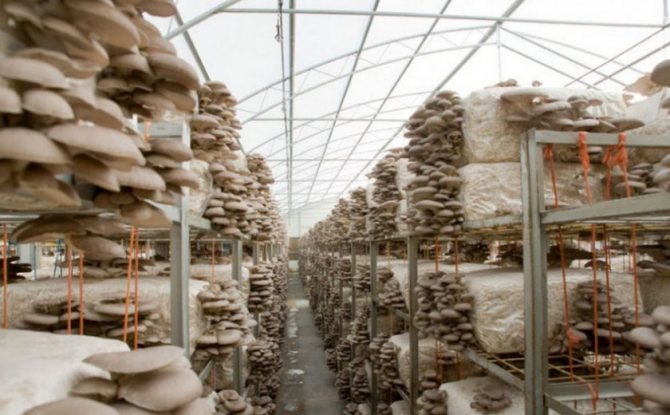

To grow mushrooms, you need to choose a method that is convenient for yourself. There are two such ways. The first is charcoal cultivation, the second is bagged agroponics.
An important condition for growing mushrooms in winter is the need for heating and minimal lighting. To prevent the sun's rays from penetrating, they use darkening with film or agrofiber. Greenhouses glazed or covered with transparent foil are not suitable for growing oyster mushrooms.
Video: Growing oyster mushrooms in a greenhouse
Growth enhancement method
Dig the selected stump into the ground 2/3 of its size. Overlay the diameter around it with sawdust, pour abundantly with water. Make from 6 to 8 holes in the upper part of the stump, and up to 4 holes along the lateral diameter. Place them at a distance of 15-20 cm from each other. Pour the purchased mycelium into each groove. Tamp it well, but do not crush it. Close the holes with:
- plasticine;
- moss;
- adhesive tape;
- garden var.
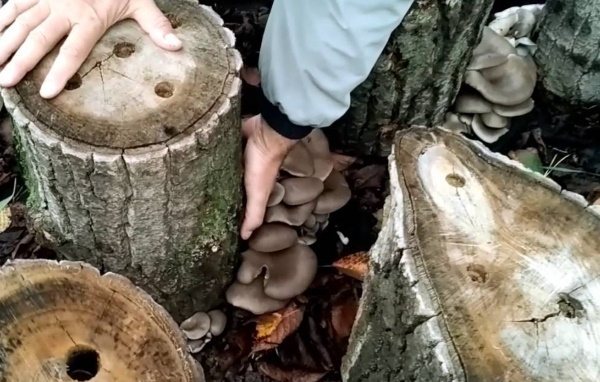

Even garden cement can be used. Mushrooms grow anywhere on the stump, not necessarily near holes. Plant the grass around the stump. It is needed to retain moisture in the trunk circle. If it is dry season, watering is carried out 2-3 times a day. Do not pour water directly onto the mycelium. To carry out the manipulation, take a fine spray.
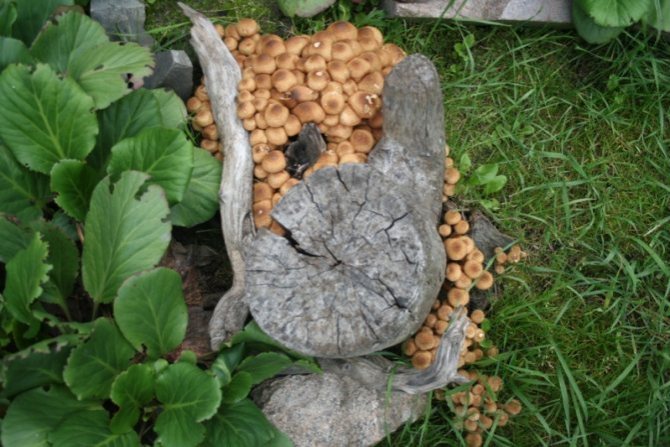

Forest mushrooms in the garden - it's easy! You can grow cultivated and forest mushrooms in the country house. It is good if trees grow on the site. Below them for the mycelium ...
Landing
Strictly following the recommendations when planting oyster mushrooms, you will be able to get a good harvest of mushrooms.
Algorithm for planting oyster mushrooms on wood in a greenhouse:
- Prepare wood blocks, 50 cm to 1 m long.
- Make perforations (cuts) with a depth of 7-10 cm. The distance between the cuts should be about 10 cm.
- Place the mycelium in the holes, plug them with sawdust or moss. Moisturize.
- Cover the greenhouse floor with plastic wrap.
- Prepare a mixture of 1 part sand, 1 part soil, 2 parts sawdust. Cover the film with three quarters of this soil mixture.
- Place the round timber on the floor at a distance of 30–40 cm from each other. Sprinkle on top with the rest of the potting mix, sprinkle some manure on top.
- Cover everything with agrofibre.
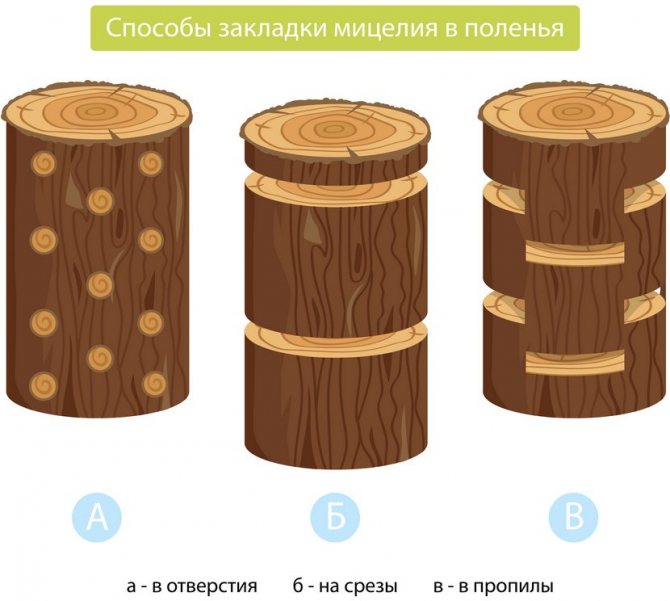

Algorithm for planting oyster mushrooms in bags in a greenhouse:
- The straw should be stuffed into plastic bags.
- Place the straw bags in the hydrothermal container.
- Press on top with a lattice.
- After a while, pull out heavy bags using a telpher (overhead lifting device, hoist).
- It is good to crush the grain mycelium by hand.
- After the straw has cooled, stuff it into mushroom blocks with small holes or air filters for air exchange, well tamping and shifting the layers of straw with mycelium.
- Pack the blocks with tape.
- Place the bags in the germination shop for 15–20 days, it should be warm (up to + 20… + 24 ° С) and dark. These are the prerequisites for incubation and the beginning of the first phase of growth.
- After the specified time has elapsed, move the blocks to another workshop, where it is cooler + 12 ... + 17 ° С. Now the mushrooms need a higher humidity of 80–90% and aeration of the room for 1 hour a day.
- For good mushroom growth, an automatic watering system should be used. If there is no such system, then the bags can be sprayed with water. Do not overdo it with spraying, otherwise the straw can rot.
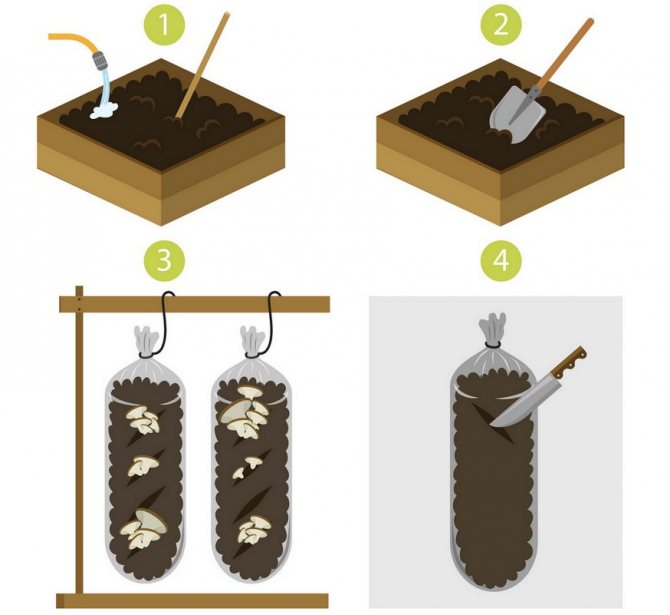

1 - moistening and mixing the substrate; 2 - mixing pasteurized substrate with mycelium; 3 - making cuts on the bag filled with the seeded substrate; 4 - placement of blocks for growing mushrooms on racks with vertical hanging
The mushrooms can be harvested 7 days after starting the cultivation from the bag, up to 3 times until the mycelium is depleted. Moreover, a new crop of mushrooms will appear every 7-14 days during this time. In other words, it takes about 5–8 weeks to grow 3 crops of oyster mushrooms, while this can be done with minimal equipment and experience. More than 500 kg of fresh mushrooms per 1 ton of dry straw can be obtained in 45-50 days.
Important! When harvesting oyster mushrooms grown in bags, they must not be cut off, since the mushroom roots may deteriorate, which will lead to rotting of the entire block. It is best to do this by grabbing the entire fruiting body and twisting it.
Algorithm for planting oyster mushrooms on wood in the garden:
- Before laying the mycelium, you need to knead it with your hands.
- Pour mycelium into the holes in the wood and tamp lightly. So fill each hole.
- Seal the mycelium on top with fresh, moist sawdust of deciduous trees and forest moss. This is done to prevent the mycelium from drying out.
- In a shady place in the garden, dig a hole 10 cm deep. Pour sawdust on the bottom and sprinkle with water so that they are wet.
- Add a handful of fresh mycelium on top of the sawdust.
- Set the wood with the butt side down into the hole, sprinkle it around with earth, tamp it down.
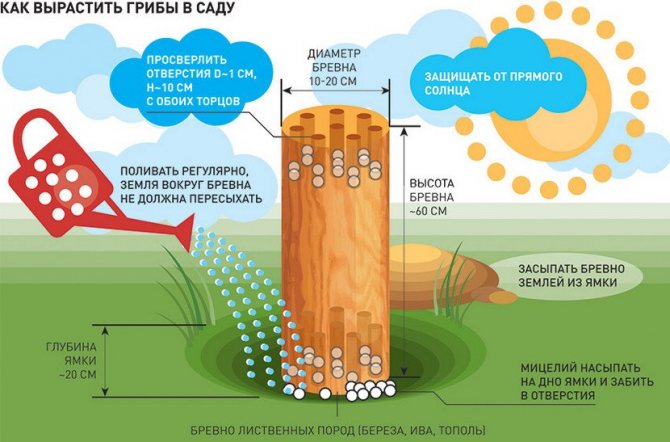

For the winter, tree posts do not need to be covered. If the region where the oyster mushroom is grown is hot and dry, the logs will need to be kept moist and cool. To create a greenhouse effect, it is better to cover the wood with a film; it is preferable that it be defective. This is necessary in order to create a greenhouse effect. The film should remain on the wood for about 2-3 weeks. In the spring, you can expect the first mushrooms to appear. Such wood will bear fruit 2 times a year, in spring and autumn.
Important! If you confuse and put the wood on the wrong side down, then you can not wait for mushrooms, since moisture will not rise up the fibers and will not be able to feed the oyster mushrooms.
Harvesting
Fruiting bodies should be harvested by curling before releasing the spores so that no hemp remains in the beds (straw). It is advisable to collect all the mushrooms from the block at a time, then the next stream will appear at the same time.
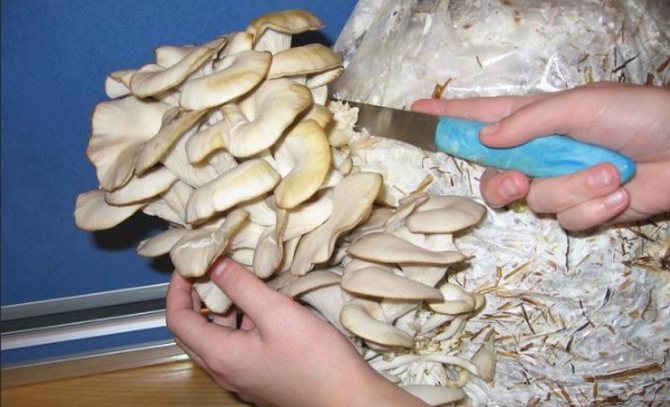

Fresh mushrooms should be packed in perforated plastic bags. Freshly picked oyster mushrooms can be stored at low temperatures (+ 5 ... + 10 ° С) for 1-2 weeks. without loss of quality.After harvesting, the premises must be disinfected - first with water, and then with a sulfur stick.
Suitable premises
To grow oyster mushrooms in a summer cottage, you will need a suitable room: growing them in a heated living room or on a summer cottage loggia is problematic. The most suitable option is a cellar or basement, where a cool air temperature is maintained.
Before planting mushrooms, the room is disinfected to get rid of mold and pathogenic microorganisms. This is done by staining with lime 1-2 times, followed by spraying with chlorine, dissolved at a concentration of 4%.
Growing mushrooms in the substrate
If it is not possible to breed oyster mushrooms on the ground, you can try to grow them in a substrate of seeds, straw and sawdust of deciduous tree species.Prepared raw materials should be crushed, placed in a large saucepan and covered with boiling water. After a few hours, the water must be drained by squeezing the material for the substrate with your hands so that it is not wet, but moist. Excess water will be detrimental to the mycelium.
Shredded wet raw materials and mushroom mycelium should be laid in layers in a plastic bag, tamping strongly, and then tightly tie the bag with a rope and make several small holes in it. Keep the substrate bags in a well-moist, warm and dark place until the first mushroom buds appear. As soon as the ovary becomes visible, the bags should be moved to a cool place with sufficient lighting and irrigated with water every other day. About a week after the germs appear, the first crop of mushrooms can be harvested. On the same substrate, oyster mushroom can be grown up to three times, after which it will be necessary to prepare new soil.
As you can see, in order to start breeding oyster mushrooms, there is no need to invest a large amount of money in the business, build greenhouses or buy special equipment. You can grow mushrooms for yourself, or you can turn the cultivation of oyster mushrooms into a family business and sell products to shops, cafes, restaurants or wholesalers. The production of oyster mushrooms in the country is able to bring large incomes with minimal financial investments, which in our difficult times is very important and profitable.
Growing oyster mushrooms on stumps is an extensive method of growing mushrooms. It is practiced in semi-basements and outdoors. Artificially obtained oyster mushrooms began in the 40s of the last century. The first trials were successful. After 20 years, mushrooms began to be cultivated on an industrial scale. Now, up to 4,000 tons of oyster mushrooms are supplied to the market, and these figures are steadily growing. This means that the production of growing oyster mushrooms is a profitable business.
Fruiting and care
During the fruiting period, you will need eight hours of lighting with artificial lamps, a high percentage of humidity, frequent ventilation and a temperature not higher than 15 degrees.
To create high humidity, you can spray walls and flooring with water, but the water should in no way get on the substrate.
If all norms are met, fungi will appear within two weeks from these slots. So that the remnants of the fruiting mushroom bodies do not rot inside, it is better to twist the mushrooms rather than cut them.
The substrate can be used to grow up to four oyster mushroom harvests. As a place for growing, you can use a loggia, basement, attics, etc. Oyster mushrooms do not like direct sunlight, so it is better to use darkened places. Compliance with a normal microclimate will yield a yield of 25 to 40% of the weight of the entire substrate.
Harvesting:
- It is better to harvest 5-6 days after the formation of the mushrooms.
- Optimally, the head should have a diameter of 40-100 mm, the stem 10-40 mm.
- At the very beginning of its development, the cap of the fungus is painted in a dark color, later it becomes ash-gray, and only at the end it sharply discolors.
- If the mushroom overripe, the cap begins to break, the leg hardens.
- The commercial appearance deteriorates, and with it all the taste and nutritional properties fall.
- You need to store fresh mushrooms at 0-5 degrees above zero for a week, and for about 6 hours at a temperature of about 20 degrees above zero.
- Selectively cutting mushrooms is not recommended! In general, cutting the crop should be neat and unhurried so as not to damage the mycelium.
- When cold weather comes, you need to cover the beds of mushrooms with straw if they are grown outdoors.
Some of the summer residents have been successfully building a business on growing oyster mushrooms for a rather long time. High demand and minimal growing costs bring tangible profits.
Care during growth
Oyster mushrooms do not require special care.The key to successful cultivation is maintaining the correct air humidity and temperature, maintaining a clean room, controlling watering and ventilation. The mushroom farm must be protected from flies and other insects from outside.
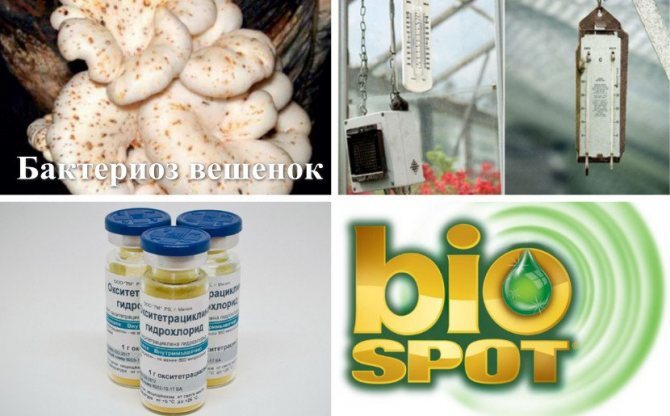

Oyster mushrooms are susceptible to diseases such as macula, brown spot (bacteriosis) and bacterial rot.
Disease control measures needed include:
- proper management of temperature and humidity during the growing season;
- application of water with a content of 20 mg / l of chlorine and “Biospot” preparation for spraying infected fungi, which has proved itself well for solving problems with bacteriosis of fungi;
- the use of oxytetracycline and streptocycline.
Did you know? The culinary experts of Ancient Rome highly appreciated edible mushrooms. The so-called Caesar or royal mushroom got its name precisely because it was considered a delicacy worthy of the emperor.
Oyster mushrooms - a simple and profitable business (video)
How is oyster mushroom harvesting?
The oyster mushroom stretches closer to the holes that we made, but the mushrooms do not always fall exactly into them. Therefore, it is necessary to help the mushrooms get out - cut holes in the bags, making them a little larger. Once the mushrooms have made their way out, it takes about 6-8 days for them to grow to cut.
Mushrooms should be cut carefully, leaving no particles of oyster mushrooms on the bags. You can use mushrooms right away, and if you need to store them, you will need to use special containers or plastic wrap.
After cutting the mushrooms, the next crop will appear in two weeks, and the next in another two. Let's put it more simply - there are three harvest waves, which make up the total harvest in the corresponding percentage - 70%, 20%, 10%.
The value of the substrate in terms of the weight of the finished product is approximately the following - from 10 kg of substrate for the entire rotation, about 3 kg of oyster mushrooms are obtained.
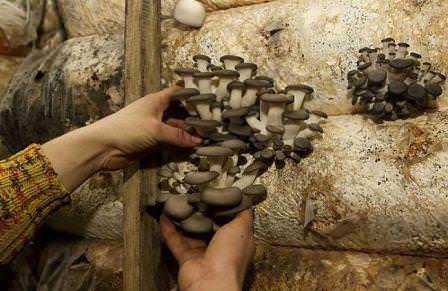

Preparing the substrate with mycelium
The so-called extensive method of reproduction of the mushrooms we are considering implies the use of industrial, wood waste - tree stumps, stumps. It is important that the bars or logs are made from crops from which the wild, forest oyster mushroom grows. Next, we will plunge into the step-by-step process of preparing the substrate for future fruits:
- Choosing suitable wood species. We cut large logs into neat medium-sized bars (from 30 centimeters). We place the tree in a large container and fill it with clean, cold water. The soaking period is 6-8 days. If there is an opportunity to get fresh raw materials, which are only "mined" in the forest, the stage of "wet impregnation" can be skipped.
- We remove the bars from the liquid, the ideal moisture content of the substrate is not less than 80 and not more than 90 percent.


We keep hemp in water for 6-8 days
Sowing mycelium
Unlike other types of edible mushrooms, growing oyster mushrooms on stumps or bars eliminates the addition of additional fertilizers. Therefore, the next step is the direct transfer of the fungal mycelium to the substrate. There are several methods of infecting wood with a parasitic rhizome. The first is the installation of a "tower" of pieces of wood, when 120-150 grams of mycelium is poured onto the edge of each structural detail. The second is the infusion of mycelium into the drilled holes. Fans of the first method wrap the logs with an airtight film. Due to this, the raw material retains the required moisture level. Adherents of the second seal each hole with adhesive tape or natural forest moss. There is also a third type of manipulation - you can cut out a thin wooden disk and move the mycelium to its end. However, for some reason the first two are in great demand among mushroom growers.
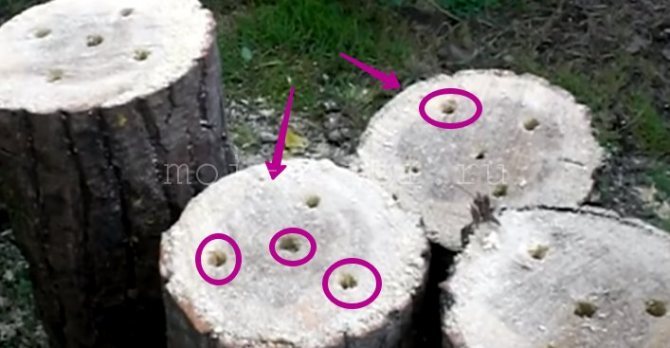

After the wood has become the carrier of the mycelium, it is necessary to place the raw materials in a sufficiently warm room. The optimum temperature for the development of a culture is 16-20 degrees with a plus sign.Periodic moistening is also required - professionals recommend sprinkling the "farm" with water once every few days. You can additionally cover the wood with perforated foil. For the next 8-10 weeks, additional actions are not needed, for several months the raw material will be overgrown, wrapped in rhizomes.
Humidity
It is very important to maintain a fixed humidity level of no more than 90 percent. With proper care, after the specified time, light, airy growths resembling fluff will appear on the surface of the wood. As soon as the plaque begins to evenly cover the bars, it is time to transfer the logs to a permanent habitat intended for fruiting. A vegetable garden or a shady garden in the country can be a suitable place.
Growing on a substrate
When growing on a substrate, a mixture is prepared, which consists of:
- cereal straw,
- corn cobs,
- sawdust, while excluding coniferous sawdust.
All components are crushed so that the particles are not more than 3-8 cm, then pasteurized by keeping in hot water with a temperature of 70 ° C-80 ° C for 5-8 hours or boiled for 1.5-2 hours. Water is drained from the cooled substrate.
The additives introduced into the composition of the substrate allow to accelerate the fruiting process of mushrooms. It is given as a percentage of the total mass of the soil:
- bran - up to 10%,
- young limestone - up to 2%,
- gypsum - up to 2%,
- urea - up to 0.5%,
- superphosphate - up to 0.5%.
Sowing
Sowing mycelium into the substrate mixture can be performed in one of the following ways:
- The substrate is laid out in bags in layers of 10-15 cm, between which the mycelium is laid out. The layers are not compacted, but they also do not allow air gaps. The bag is filled to 2/3 of the permissible volume, tied and vertical slits are made on the surface with an interval of 10-15 cm. The consumption rate of the mycelium is about 3-5% of the total volume of the used substrate mixture.
- The bags are filled with a substrate and tied. Vertical cuts are made on the surface through which the mycelium is laid. The slots are sealed with tape for 7 days, after which it is removed. The consumption rate of the mycelium for each slot is 1 tsp.
Follow-up care
The incubation period is 10-15 days. At this time, bags with mycelium are placed in a room with a temperature of 18 ° C-22 ° C, no lighting is required. The growing white mycelium appears 3-4 days after sowing.
When the temperature regime is exceeded by more than 30 points, the mycelium dies.
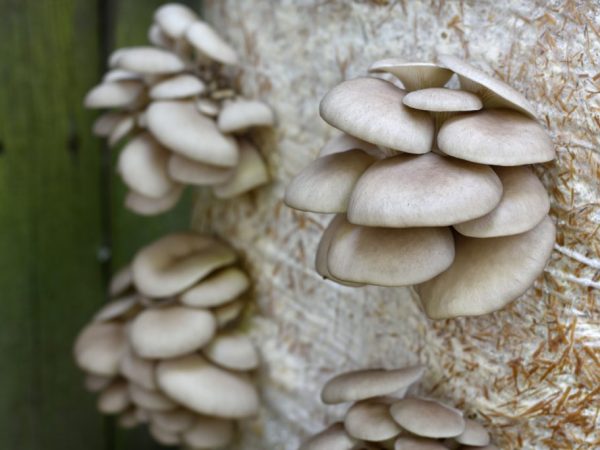

Temperature is very important for mushrooms.
At the end of the incubation period, bags with sprouted mycelium are transferred to a place where the temperature is maintained at 10 ° C-15 ° C. For additional lighting, fluorescent lamps are used, creating an artificial daylight hours with a duration of at least 8-10 hours. The required humidity level is 90-95%. When creating optimal care conditions, fruiting occurs after 1.5-2 weeks. The mushrooms are harvested by twisting them out of the substrate. The number of crops from 1 bag - up to 4.
Preparatory work
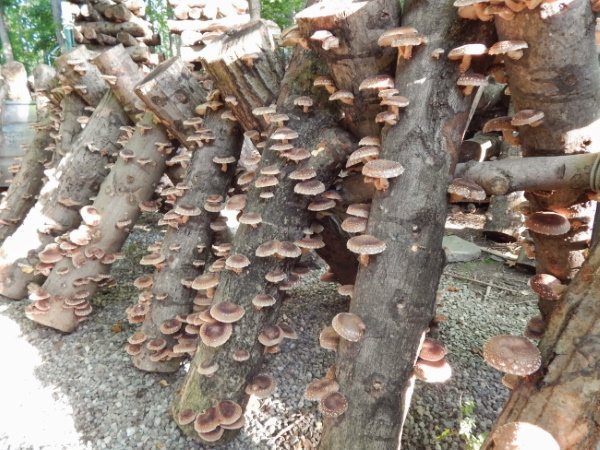

Oyster mushrooms are mushrooms that do not like the abundance of sunlight, drafts. A planting site should be chosen in the shade, for example, under a spreading tree. Place the stump so that on the hottest day, the crown shades the mushrooms. At the same time, the chosen place must be accessible for rain, otherwise you will have to water often. Other recommendations:
- you need to choose the northern part of the site for landing, for example, along buildings;
- you cannot place the stump under a canopy, otherwise the mushrooms will be waterlogged;
- for planting the mycelium, trimmings are needed, the diameter of which is at least 15 cm;
- you can not take stumps, the wood of which has obvious signs of destruction or rot;
- strongly dried driftwood should not be used, otherwise the crop will not be harvested.
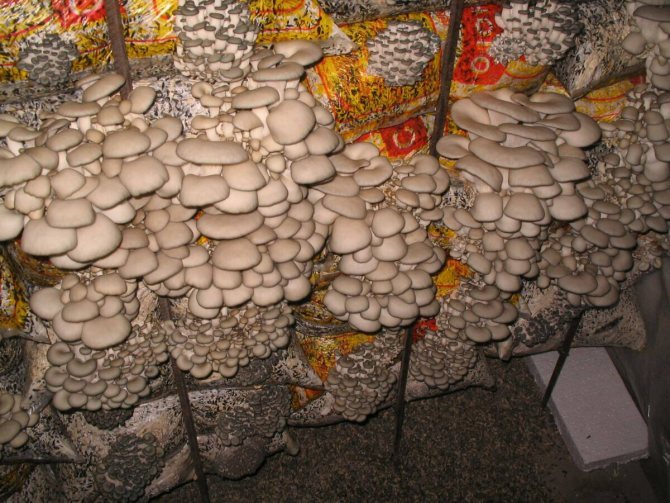

Planting mushrooms in the garden and in the basement in autumn Mushrooms can not only be picked in the forest, but also grown at home: in the basement, garage, underground and in the garden. When ...
Having chosen a place for planting, the gardener places the stump.There should be no mistakes, otherwise the mycelium will not receive the required amount of nutrients.
On a note! The stump must be placed strictly vertically. Its position should be the same as it was in nature. You cannot change the angle of inclination, make log cabins or turn it upside down.
A little about the history of mushroom growing
They have been trying to grow mushrooms artificially for more than one century. The first experiments on growing oyster mushrooms date back to the 40s of the last century. They turned out to be successful. In the 60s, this mushroom began to be grown industrially. Oyster mushroom production is growing every year. Now in Russia they collect a considerable harvest of artificially grown oyster mushrooms - 3.8 thousand tons.
Everyone can grow oyster mushroom at home. You can do this at your summer cottage. Oyster mushrooms in the country can be grown on stumps or on an artificial substrate.
